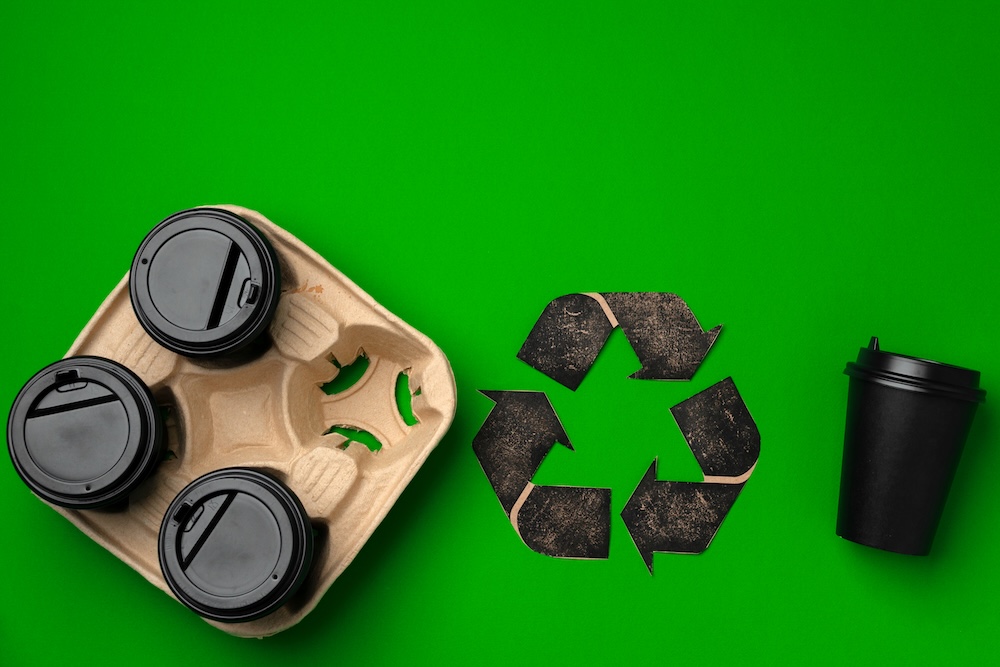We’ve been told a story for decades: if you recycle, you’re doing your part. Toss your plastic bottle in the right bin, and it will come back as something new. Put your yogurt cup in the blue bin, and it will live again.
That story is not just misleading. It’s the biggest lie of all.
The Promise We Bought Into
Recycling was sold to us as a contract: if we sorted our waste properly, the system would handle the rest. Plastic would be collected, reprocessed, and turned into new bottles, bags, or containers.
It sounded like a solution. It made us feel responsible. It justified our continued consumption of disposables.
But the truth is this: plastic recycling was never designed to work at scale.
The Numbers Don’t Lie
Globally, less than 10% of plastic waste is recycled (OECD, 2022). In the United States, that number drops closer to 5% (EPA, 2021).
Most of what we put in recycling bins ends up in landfills, incinerators, or shipped overseas where it’s burned or dumped. Thin films, mixed plastics, and contaminated containers are rejected outright.
The recycling logo — those chasing arrows — has been one of the most effective greenwashing campaigns ever invented. It suggests a circle. In reality, it’s a straight line: from extraction to production to disposal.
The Corporate Greenwash Machine
The lie wasn’t an accident. It was strategic.
Oil and petrochemical companies knew decades ago that plastic recycling wouldn’t work. Internal memos from the 1970s and 80s (unearthed by NPR and PBS in 2020) admitted recycling would never keep up with production. But they pushed it anyway — because it shifted the blame.
Instead of questioning why corporations were flooding the market with single-use plastics, the focus became: why aren’t consumers recycling enough?
Recycling became the perfect distraction. It allowed plastic production to double and then triple, while consumers carried the guilt of overflowing bins.
Why Recycling Doesn’t Work for Plastic
Unlike aluminum or glass, plastic degrades with each cycle. A PET bottle cannot simply become another PET bottle endlessly. At best, it gets downcycled into lower-quality products — carpets, decking, textiles — that themselves will eventually become waste.
And many plastics can’t be recycled at all.
- Films and bags clog machines.
- Mixed plastics can’t be separated cheaply.
- Food contamination makes containers unrecyclable.
Even in places with advanced infrastructure, recycling cannot keep pace with the sheer volume of plastics being produced. The system was doomed before it began.
The Real Costs of the Lie
The biggest lie of all is not just about waste. It’s about the consequences of believing the story.
- We delayed real solutions. Instead of phasing out single-use plastics, society clung to the illusion that recycling would save us.
- We fueled more production. Plastic demand kept rising because consumers believed the waste would be handled.
- We globalized pollution. For decades, wealthy countries shipped plastic waste to poorer nations, exporting both the illusion and the damage.
While we sorted bins in good faith, plastic choked oceans, poisoned air through incineration, and infiltrated our food chains.
Don’t We Want Better Than a Lie?
We did our part. We rinsed, sorted, and trusted the system. But the system was never built for us. It was built to protect the profits of industries dependent on disposability.
Don’t we deserve honesty? Don’t we deserve packaging that is actually safe, reusable, and circular by design? Don’t we deserve a future where waste isn’t exported, burned, or buried, but prevented in the first place?
Recycling was never the answer. Refusal, redesign, and responsibility are.
The Way Forward
If recycling is the lie, what’s the truth?
Refuse and Reduce
The simplest and most effective solution: stop producing single-use plastics at scale. Phase out unnecessary packaging, especially films, bags, and wrappers.
Reuse and Refill
Invest in durable packaging systems: glass bottles, refill stations, stainless steel containers. Circularity is possible when products are built to circulate.
Extended Producer Responsibility
Force corporations to fund and manage the waste they create. Accountability must shift back to the producers, not stay with the consumers.
Global Policy Action
Support international agreements like the UN Plastics Treaty to curb virgin plastic production at the source.
FAQs
Isn’t some recycling still worth doing?
Yes. Aluminum, glass, and certain paper products recycle efficiently. But for plastic, recycling has been oversold as a cure-all — and that’s the lie.
What about “advanced” recycling like chemical recycling?
Chemical recycling is often just incineration rebranded. It consumes huge amounts of energy, emits toxins, and rarely achieves circularity.
Should I stop recycling plastics entirely?
No — but stop believing it’s the solution. Recycle what your local system truly accepts, but focus on reducing and refusing plastics wherever possible.
What can replace recycling as the main solution?
Redesign. Materials that are safe by default. Systems that eliminate waste upstream instead of trying to manage it downstream.
Final Thoughts
“Green recycling” was the story that let us sleep at night while plastics multiplied. But stories can be lies — and this was the biggest one of all.
The arrows on the bin told us the system worked. The truth is in the oceans, in the soil, in our bloodstreams. Recycling didn’t save us. It distracted us.
It’s time to stop believing the lie, and start demanding the truth: a world where products are designed for durability, where waste isn’t an inevitability, and where convenience isn’t purchased at the cost of life.
Because recycling was never green. It was always a shield for those who profited from disposability. And the sooner we tear down that shield, the sooner real solutions can take root.









Reader Interactions